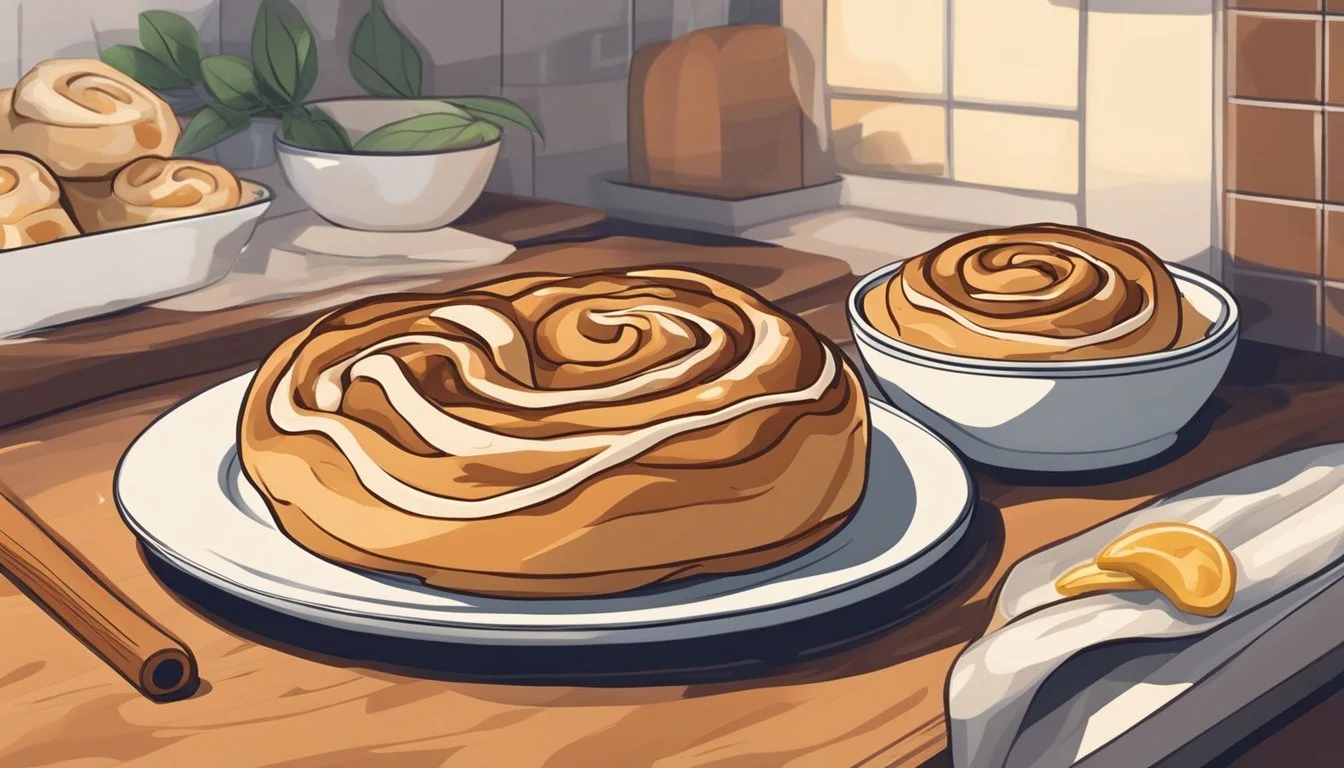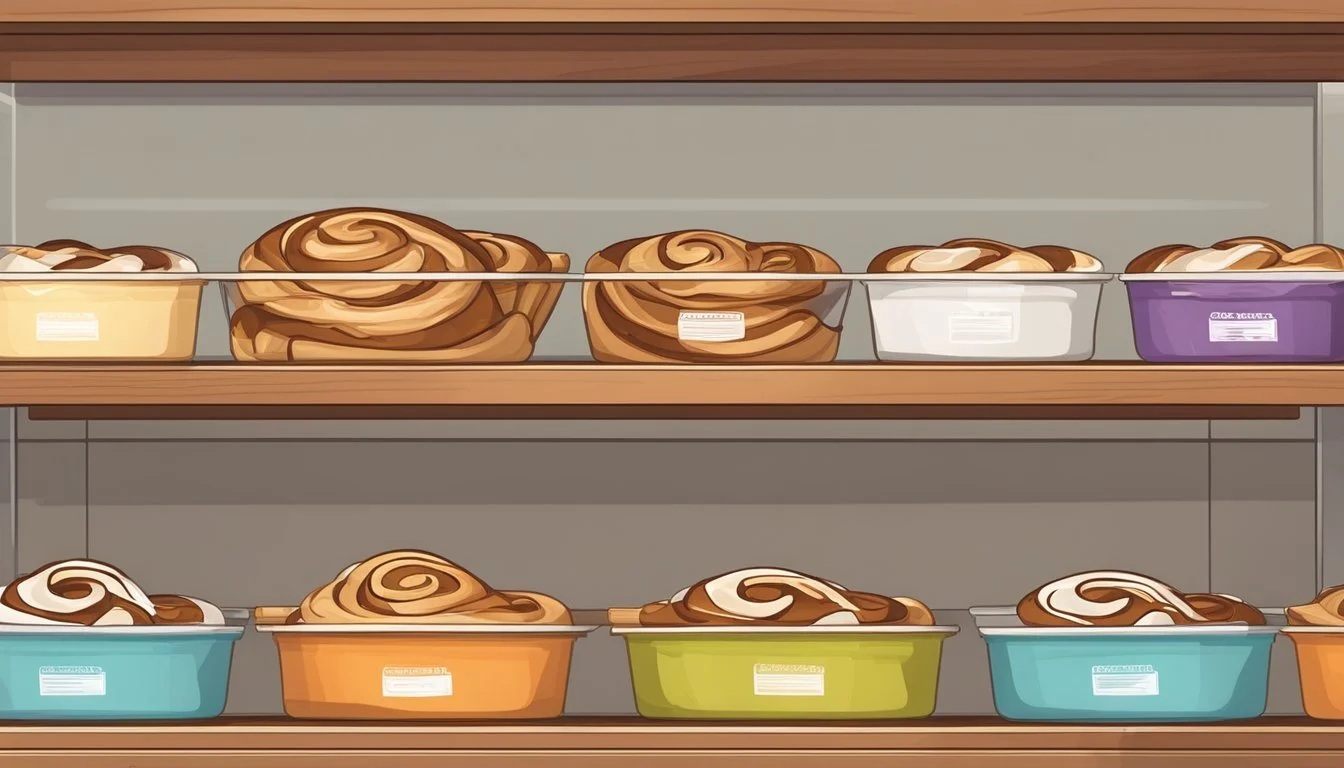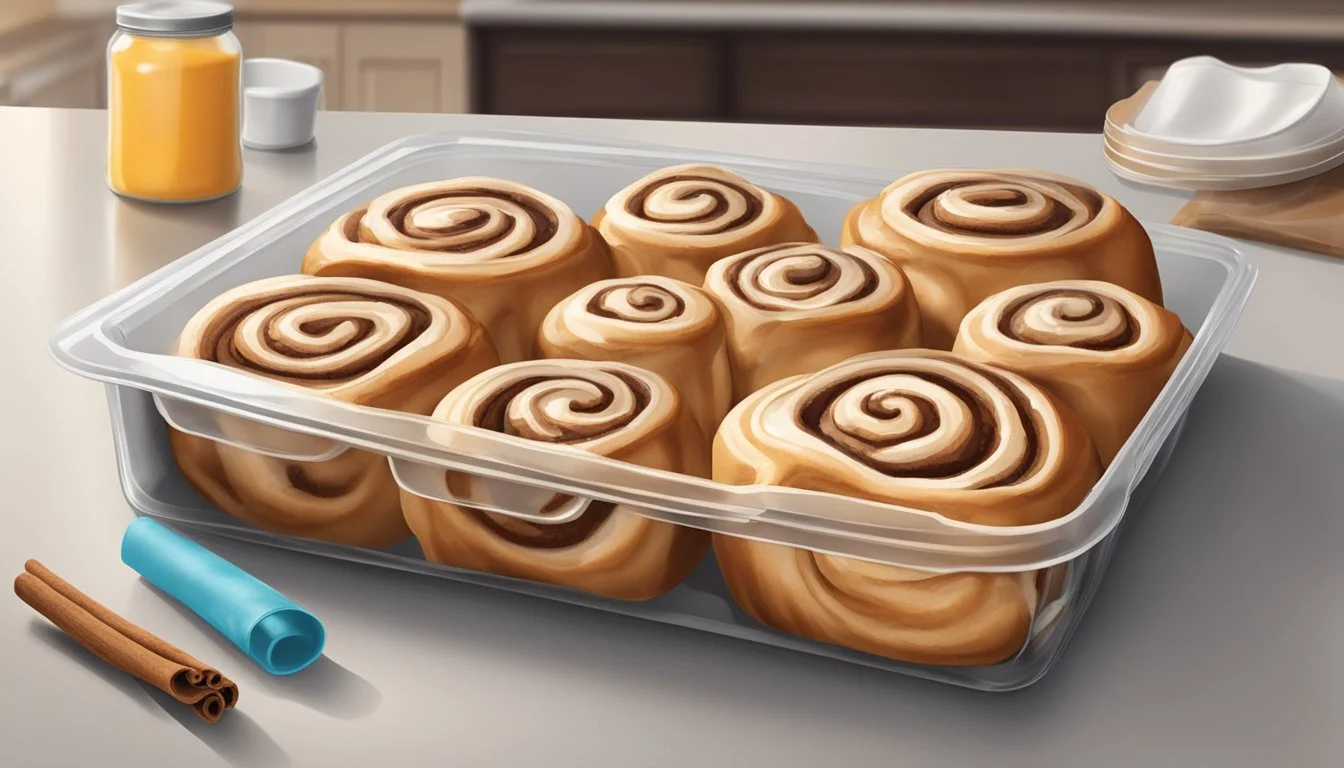Do Cinnamon Rolls Go Bad?
Understanding Shelf Life and Storage Tips
Cinnamon rolls, cherished for their sweet aroma and soft, gooey texture, do have a limited shelf life. Yes, cinnamon rolls can go bad. Whether homemade or store-bought like Pillsbury cinnamon rolls, their freshness and quality depend largely on how they are stored.
Proper storage can extend the lifespan of cinnamon rolls. At room temperature, they can last up to 2 days. If refrigerated, they remain good for about a week, while freezing them extends their edibility to up to 2 months. Nonetheless, checking for signs of spoilage, such as mold or an off smell, is crucial to ensure they are still safe to consume.
The expiration date on store-bought cinnamon rolls provides a guideline for when they will be at their best quality. Unopened dough typically remains good for 1 to 2 weeks past the "best by" date, yet it's essential to confirm there are no visible signs of deterioration before baking and eating them.
Understanding Cinnamon Rolls
Cinnamon rolls, with their sweet, aromatic filling, can vary greatly based on their ingredients and preparation methods. To fully appreciate them, it’s essential to recognize the common components and signs that indicate their freshness.
Ingredients and Varieties
Cinnamon rolls typically consist of a dough made from flour, sugar, yeast, and butter. The filling, primarily composed of cinnamon and sugar, can be enhanced with cream cheese, vanilla glaze, or even powdered sugar.
Homemade cinnamon rolls often feature ingredients like freshly ground cinnamon and high-quality butter, while store-bought options like Pillsbury may include preservatives to extend shelf life. Cinnamon rolls might also come in various flavors such as cream cheese-frosted or topped with a vanilla glaze, offering diversity in taste.
Signs of Freshness
Fresh cinnamon rolls will have a moist, tender texture and a fragrant, sweet aroma. Signs that a cinnamon roll has gone bad include mold, dry or hard texture, and off-putting smells.
Store-bought cinnamon rolls, such as Pillsbury, may have a longer shelf life due to preservatives but should still be checked for spoilage indicators. Homemade cinnamon rolls typically last shorter and may show signs of going bad sooner if not stored properly. Proper storage in an airtight container can significantly prolong their freshness.
Shelf Life and Spoilage
Cinnamon rolls can go bad if not stored properly. Factors like storage methods and environmental conditions significantly affect their shelf life. Recognizing spoilage signs is essential to avoid consuming expired cinnamon rolls.
Factors Affecting Shelf Life
Cinnamon rolls have different shelf lives depending on their storage conditions.
Room Temperature: Cinnamon rolls last up to 2 days when kept at room temperature. They should be stored in an airtight container to prevent them from drying out.
Refrigeration: Keeping cinnamon rolls in the fridge extends their shelf life to around 1 week. This is ideal for homemade cinnamon rolls.
Freezing: For long-term storage, freezing is the best method. Properly wrapped in plastic wrap and placed in freezer-safe bags, cinnamon rolls can last up to 2 months. Pillsbury cinnamon rolls can be stored for up to 3 months in the freezer.
Identifying Spoilage
Recognizing when cinnamon rolls have gone bad is vital for safety.
Visual Signs: Look for mold or discoloration, which indicates spoilage. Mold can appear as green or black spots.
Texture Changes: Spoiled cinnamon rolls can become excessively hard or soggy, losing their typical soft texture.
Smell: An off smell is a clear indicator of spoilage. If cinnamon rolls emit a sour or strange smell, they should not be consumed. Dairy in the icing can make this more noticeable.
Being aware of these factors helps in maintaining the quality and safety of cinnamon rolls.
Proper Storage Techniques
To keep cinnamon rolls fresh and delicious, there are several important storage techniques. The best methods include keeping them at room temperature for short-term enjoyment, refrigerating for a moderate period, or freezing for longer preservation.
At Room Temperature
Cinnamon rolls can remain fresh for up to two days if stored at room temperature. Use an airtight container to prevent them from drying out. Alternatively, they can be wrapped in plastic wrap to maintain their moisture.
Place them in a cool, dry spot away from direct sunlight. Avoid placing them near heat sources, as this can accelerate the spoilage process. Daily inspection for signs of mold or discoloration is advisable when storing cinnamon rolls at room temperature.
Refrigeration
When refrigeration is needed, it is vital to ensure proper wrapping. Store cinnamon rolls in a sealed container or wrapped tightly in plastic wrap or aluminum foil. This helps maintain their texture and flavor by preventing exposure to air and other food odors.
Refrigerate cinnamon rolls for up to a week. Before serving, they can be warmed slightly to restore their soft and moist characteristics. Always check for any signs of spoilage such as unusual odors or appearance before consumption.
Freezing for Longevity
For long-term storage, freezing is the most effective method. Freeze cinnamon rolls by first allowing them to cool completely. Then, wrap each roll individually in plastic wrap or aluminum foil to prevent freezer burn. Place the wrapped rolls in a freezer-safe airtight container or a heavy-duty freezer bag.
Stored properly, cinnamon rolls can last up to two months in the freezer. To enjoy, thaw them in the refrigerator overnight and warm up briefly before serving. This ensures a near-fresh taste and texture, preserving their delightful flavor.
Reheating and Serving
To maximize the quality and enjoyment of reheated cinnamon rolls, different methods can be employed based on the equipment available. Whether using an oven or microwave, it's important to preserve the flavor and texture.
Oven Reheating
Reheating cinnamon rolls in the oven can help maintain their softness and moist texture. Preheat the oven to 350°F (175°C). Place the rolls on a baking tray. Adding a small pat of butter or sprinkling a tablespoon of water on each roll helps keep them from drying out. Cover the rolls with aluminum foil to trap moisture.
Heat for 10-15 minutes or until warmed through. If desired, a fresh layer of cream cheese frosting can be applied before serving.
Microwave Tips
For a quicker method, the microwave offers convenience but may result in a less consistent texture. Place a cinnamon roll on a microwave-safe dish. Adding a damp paper towel over the roll helps retain moisture.
Microwave on medium power for 20-30 seconds, then check if it’s heated through. If not, continue heating in 10-second intervals. Be cautious to avoid overcooking, as this can make the roll tough. Applying cream cheese frosting before serving adds extra flavor and richness.
Buying and Storing Tips
To ensure the best quality and longevity of cinnamon rolls, careful selection and proper storage are essential. Consider the purchase date, packaging, and storage environment.
Selecting Cinnamon Rolls
When buying cinnamon rolls, always check the best-by date to ensure freshness. Opt for well-known brands like Pillsbury Cinnamon Rolls for consistent quality. Inspect the packaging for any damage or signs of exposure to air, as this can affect the roll's freshness.
Choosing pre-packaged cinnamon rolls with a sealed container can help maintain their quality longer. If you prefer bakery-fresh options, inquire if they used any perishable toppings, as these rolls might require immediate refrigeration.
Reading Labels for Freshness
Examining labels offers crucial information regarding storage and expiry date. Most packages will detail whether the rolls contain perishable ingredients, which necessitates refrigeration. Look for instructions regarding proper storage methods to prolong freshness.
The label might also provide tips on how to store cinnamon rolls after opening. Rolls stored in a sealed container at room temperature can last up to 2 days, while refrigeration can extend this to about a week. Freezing is ideal for long-term storage, keeping the rolls fresh for up to 2-3 months.
Reading and comprehending these labels ensures you get the most out of your cinnamon rolls without compromising safety or quality.
Health and Safety Considerations
Consuming spoiled cinnamon rolls can lead to foodborne illnesses and potential allergy reactions. Ensuring proper storage and being mindful of ingredients like dairy can help prevent health risks.
Foodborne Illnesses
Cinnamon rolls can become a host for microorganisms if not stored correctly. Mold growth is a common sign of spoilage.
Symptoms to watch for include:
Nausea
Vomiting
Diarrhea
Prevention tips:
Store cinnamon rolls in airtight containers.
Refrigerate them if not consumed within 2 days.
Follow freezing guidelines for longer storage (up to 2 months).
Allergy Information
Ingredients in cinnamon rolls, like nuts or dairy, can pose risks for those with allergies. Dairy, particularly, should be monitored because it can also contribute to spoilage if the rolls are left out too long.
Key allergens in cinnamon rolls:
Dairy: Common in frosting or dough.
Nuts: Sometimes included as a filling or topping.
Precautions for those with allergies:
Check ingredient lists carefully.
Opt for allergen-free alternatives when available.
Be vigilant about cross-contamination during preparation and storage.
Creative Uses for Stale Cinnamon Rolls
Stale cinnamon rolls might not seem appetizing at first, but there are several creative ways to transform these baked goods into delicious treats. By repurposing them, you can avoid waste and enjoy delightful new dishes.
Bread Pudding
Bread pudding is an excellent way to utilize stale cinnamon rolls.
Cut the cinnamon rolls into bite-sized pieces and place them in a greased baking dish. In a separate bowl, whisk together eggs, milk, sugar, and a bit of cinnamon. Pour this mixture over the rolls and let it sit for around 30 minutes. This allows the bread to absorb the custard, resulting in a rich texture.
Bake until the top is golden and the custard is set. This warm, comforting dessert can be served alone or with a scoop of ice cream for added indulgence.
French Toast Inspiration
Another way to repurpose stale cinnamon rolls is by making a French toast casserole.
Chop the cinnamon rolls into large chunks and place them into a large bowl. Whisk together eggs, milk, vanilla, and spices, then pour over the bread pieces. Stir until all the bread is well-coated.
Transfer the mixture to a greased 9×13 pan, spread it out evenly, and press down slightly to compress. Cover the pan with foil and refrigerate overnight. In the morning, bake at 350°F until golden and set.
This dish combines the fluffy texture of baked goods with the flavors of traditional French toast, making it a wonderful brunch option.









